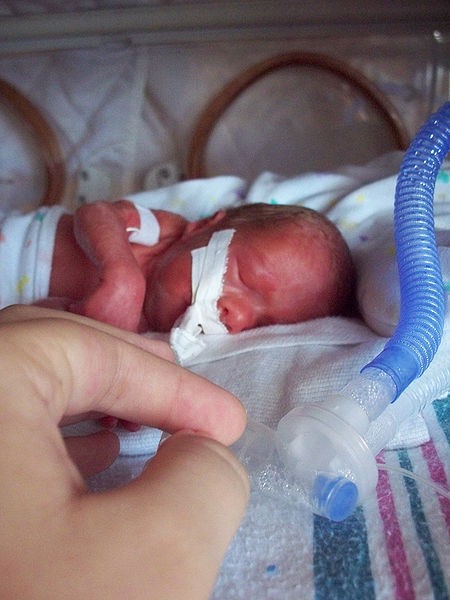Your Baby
Weeks 3 to 5
In your third week of pregnancy, your baby is one week old. Your baby’s gender was determined even before the embryo attached itself to the lining of your uterus or womb. A “bag of waters” forms around your baby and begins to fill with fluid which will protect her as she grows. During these early weeks, the placenta begins to form and acts as your baby’s lungs, kidneys, and digestive system for the next eight months. Even though she won’t use them until she’s born, her lungs begin to develop. The brain and heart start to form and her heart begins to beat. Her heart develops more quickly than the brain; the heart is needed to pump her blood to all parts of her body. At 3 weeks your baby weighs less than 1/3 of an ounce, is less than 1/4 inch long and looks like a tiny fish.
What is Preterm Birth?
Pregnancy is measured from the first day of your last period. Preterm birth, also called premature birth, is birth after 20 weeks of pregnancy and before 37 weeks. A full-term pregnancy lasts between 37 and 42 weeks. When preterm labor begins, the early uterine contractions are mild, far apart, somewhat irregular, and last a short time. As labor proceeds, the contractions become stronger, closer together, and more regular. The stronger and closer together the contractions become, the harder they are to stop. Preterm contractions that can’t be stopped can lead to preterm labor and then to preterm birth.
One way to prevent preterm birth is to prevent preterm contractions. To prevent these contractions, you must understand the factors that can cause them, such as nutrition, physical activity, stress, and certain risk factors. This booklet explains how to control many of these factors and how to help prevent preterm contractions.
Why Prevent Preterm Birth?

It’s important to prevent preterm birth because many problems—some lifelong—can affect babies born too soon. Babies born too soon are at risk for blindness, deafness, cerebral palsy, and problems developing. Once born, they often have problems staying healthy, especially if they are also too small. Babies born between 22 and 40 weeks have very different abilities to breathe, maintain their body temperature, digest food, and even see and hear. The more premature a newborn, the more likely it is that he will need machines to help him breathe and to stay warm. Premature babies also need special food, sounds muffled, lights dimmed, and their fragile skin protected.
Thinking about the effects a premature birth may have on your baby may upset you. But, keep in mind that technology and special care are available to help preterm babies grow and develop. And, more importantly, knowing the possible effects of preterm birth can help you understand why it’s important for you to do all you can to delay or prevent one. It’s much better for your baby if he can stay in your womb until full-term.
Who is at Risk for Preterm Birth?
Preterm birth occurs in about one out of every ten pregnancies. The exact cause of preterm birth isn’t known. Although preterm birth can happen in any pregnancy, there are conditions called risk factors known to increase a mother’s chances for an early birth. A mother is “at risk” for preterm birth if she has any of these risk factors:
~ a previous preterm birth or current preterm labor
~ age younger than 18 or older than 35
~ physical problems with her cervix or uterus such as an abnormal shape
~ a previous abortion or miscarriage
~ expecting more than one baby (multiple birth)
But I’m Not At Risk!
Preterm birth also occurs in mothers who don’t have the usual risk factors for preterm birth. The exact cause for a particular mother may not be known. Some risk factors are known before pregnancy, and some develop during pregnancy. About half of all premature babies are born to mothers thought to be at low risk. That’s why it’s important that all mothers:
~ understand the reasons for preventing preterm birth
~ know the signs and symptoms of preterm labor
~ know how to recognize uterine contractions
~ know what to do if contractions or labor occur